Tulips Aesthetic: Garden Designs, Colors, and Seasonal Charm
A sweep of color spreads across a garden in early spring. Rows of tulips in garden beds open like painted flames, standing tall against the cool air. Some shine in vivid yellows. Others glow in deep reds, purples, or even near-black shades. Few flowers create such instant drama.
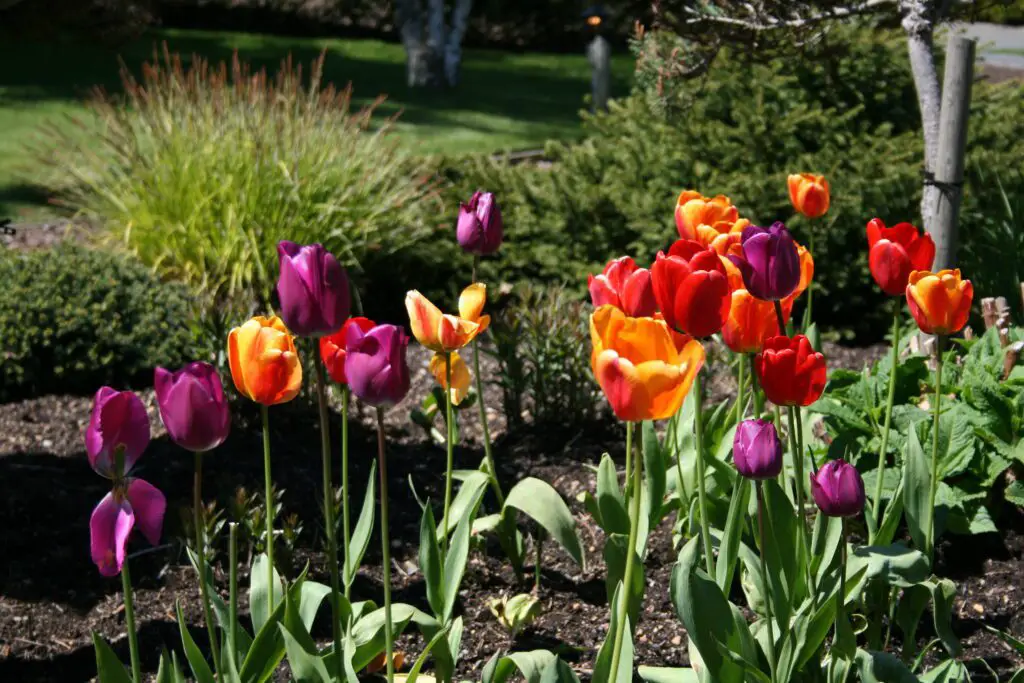
And few are as versatile, fitting into formal landscapes, casual beds, or even simple pots on a balcony. Tulips are timeless. They’re simple to grow. And they bring joy to every outdoor space. No matter how big or small your garden is, tulips can transform it into something memorable.
The Timeless Appeal of Tulips
Tulips flowers aesthetic has fascinated gardeners for centuries. They carry a natural elegance that fits neatly into any setting. Place them in a tidy border, and they look crisp and neat. Scatter them in a field, and they look wild yet graceful.
The tulips garden aesthetic is about more than color. It’s about mood. Pale pinks and whites soften a yard. Strong reds and yellows demand attention. And the tulips dark aesthetic, with deep purple or nearly black blooms, creates a bold, dramatic tone.
Their appeal also lies in their short but powerful season. The flowers bloom for just a few weeks, but that makes them even more special. The anticipation of their arrival, after a long winter, is part of what gives tulips their charm.
Knowing Your Tulip Types and Colors
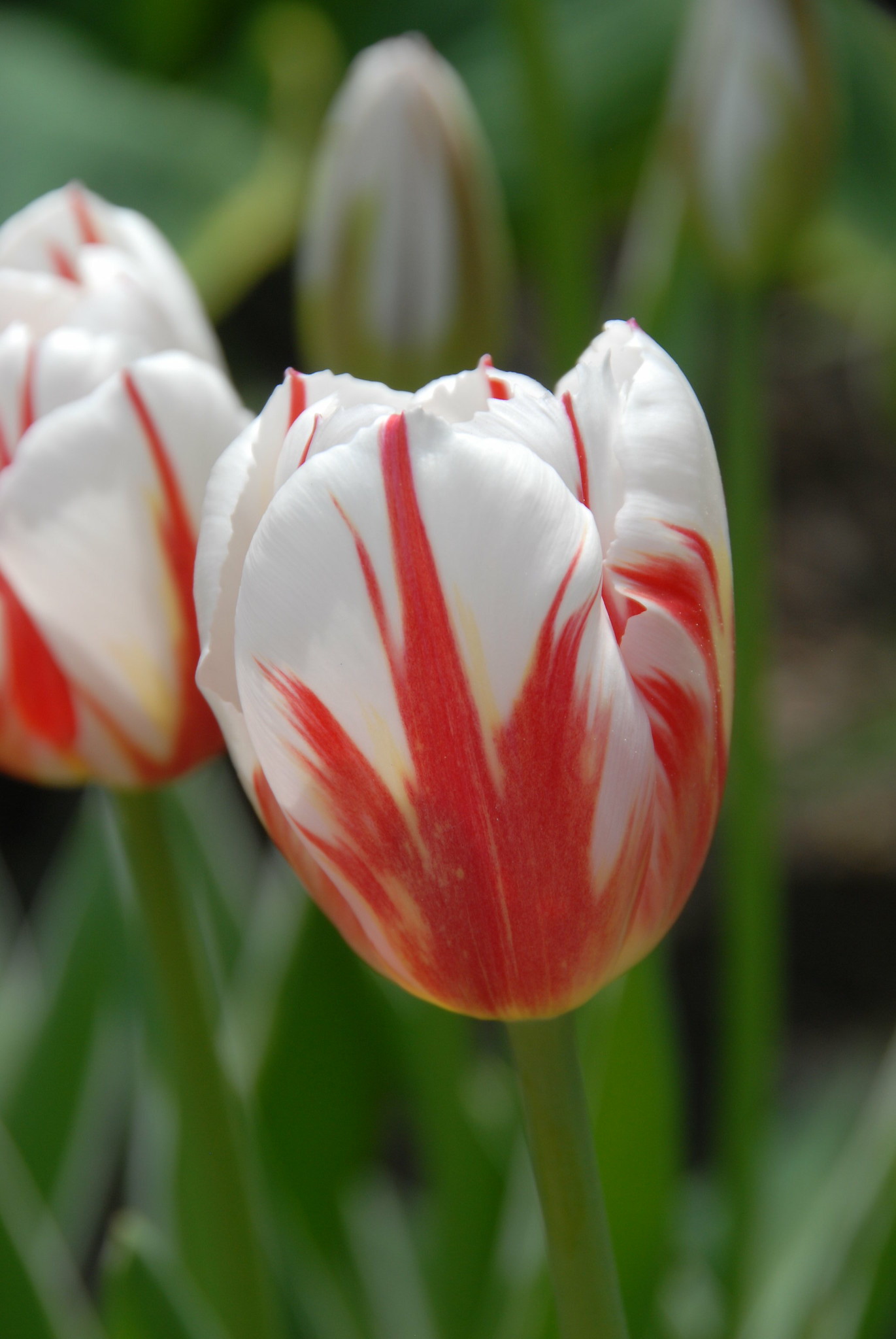
Tulip Types
There are many tulip types, each with its own personality.
- Single Early: Compact plants with simple, cup-shaped flowers that bloom first.
- Double Late: Lush flowers with layers of petals, almost like peonies.
- Fringed Tulips: Petals edged with lace-like fringes, perfect for adding texture.
- Parrot Tulips: Wild, twisted petals with streaked colors, ideal for dramatic displays.
- Triumph Tulips: The most reliable group, sturdy and colorful, often sold in large quantities.
- Darwin Hybrids: Tall, strong, and long-lasting, excellent for garden borders.
Planting different groups extends bloom time. Early types open in March, while late tulips can flower into May. This staggered schedule keeps your garden bright for weeks.
Tulip Colors
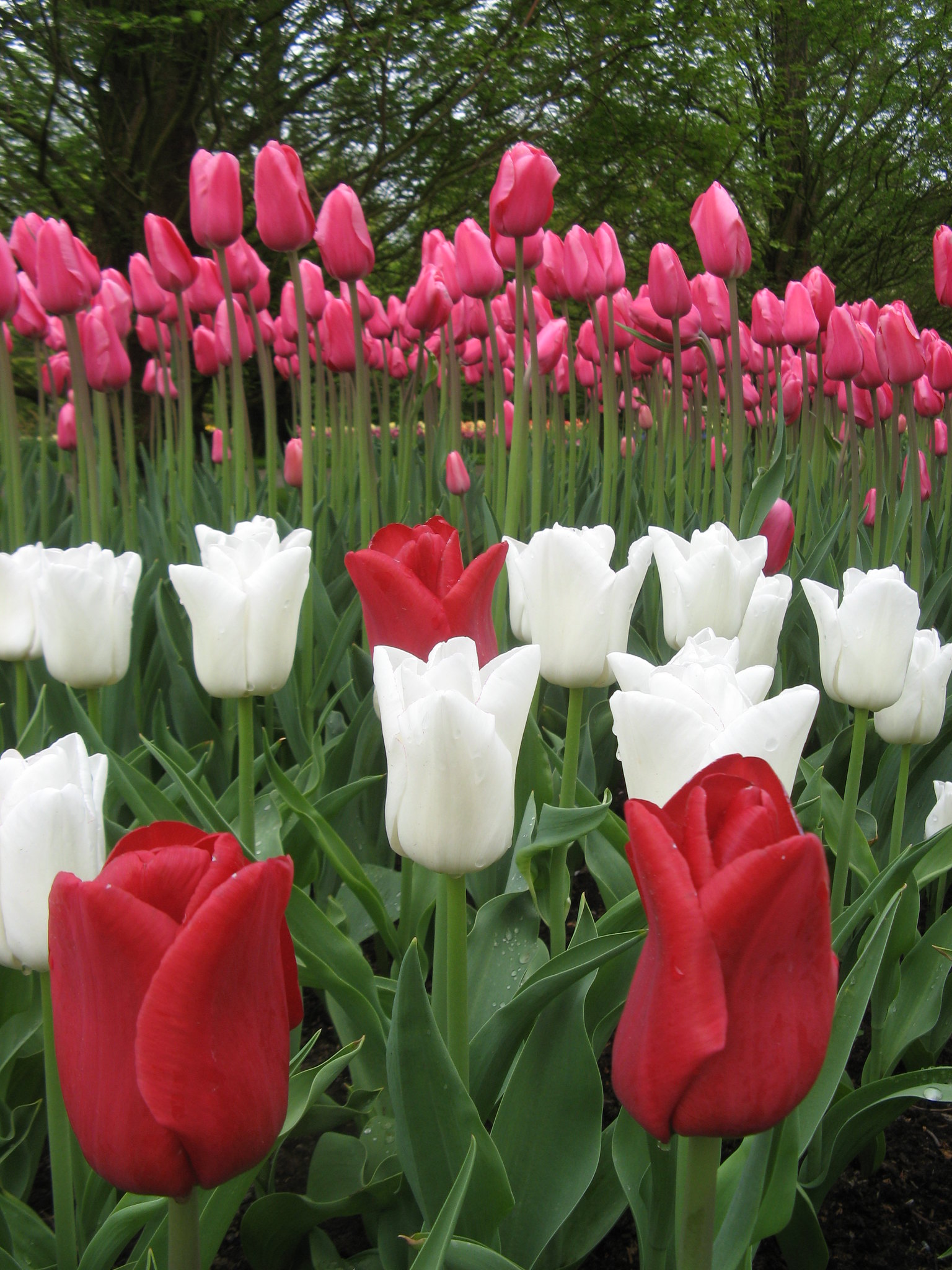
Tulip colors cover nearly every shade of the rainbow. Red speaks of passion. Yellow signals cheer. Pink is soft and romantic. White tulips symbolize purity. And deep purple or near-black varieties set a moody stage.
There are also striped and variegated tulips, where petals show two or more shades. Some varieties change color slightly as they mature, adding extra surprise to your garden. A bed planted with mixed shades creates a colorful tulip landscape that feels alive and vibrant.
Gardeners often borrow ideas from tulip pictures seen in Dutch fields. Rows of one color can create strong impact. But mixed beds, especially when balanced with other spring flowers, can feel more natural and inviting.
Planning Your Tulip Garden Design
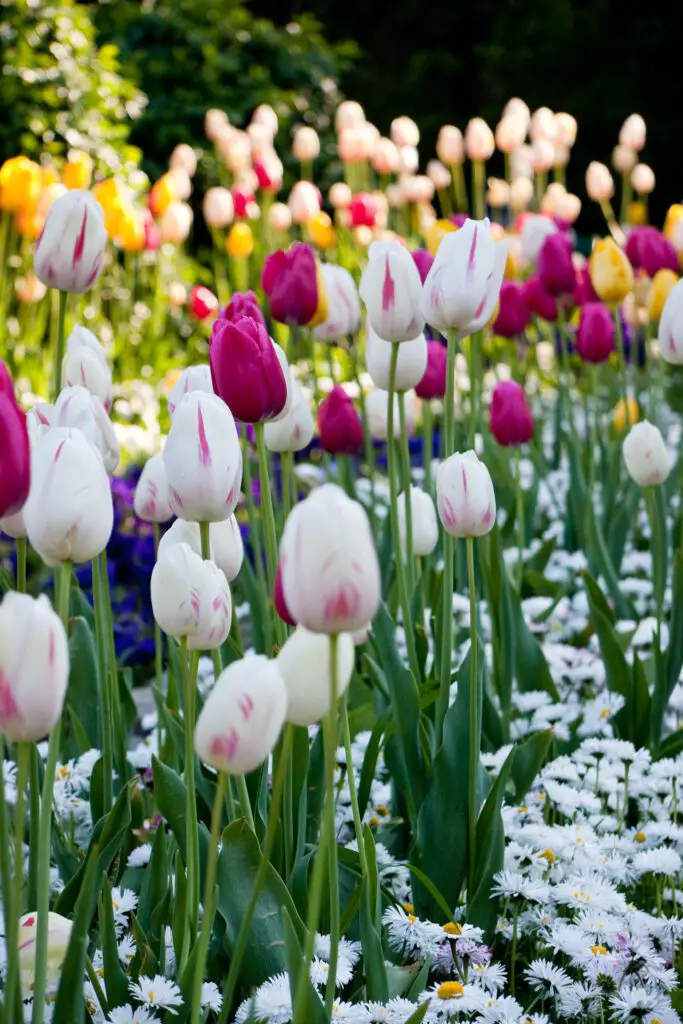
A successful tulip garden design begins with placement. Tulips need sunlight, at least six hours a day, to thrive. Soil should drain well. Heavy clay can cause bulbs to rot, so raised beds or sandy soil mixes work best.
Layout Ideas
- Formal Rows: Perfect for front yards or entryways. Blocks of color give symmetry.
- Clusters: Groups of 10–15 bulbs create bold splashes. Clumps look more natural than single lines.
- Borders: Plant tulips along paths or fences to guide the eye through the garden.
- Mixed Beds: Combine tulips with perennials or shrubs for depth.
More Elaborate Layout Designs
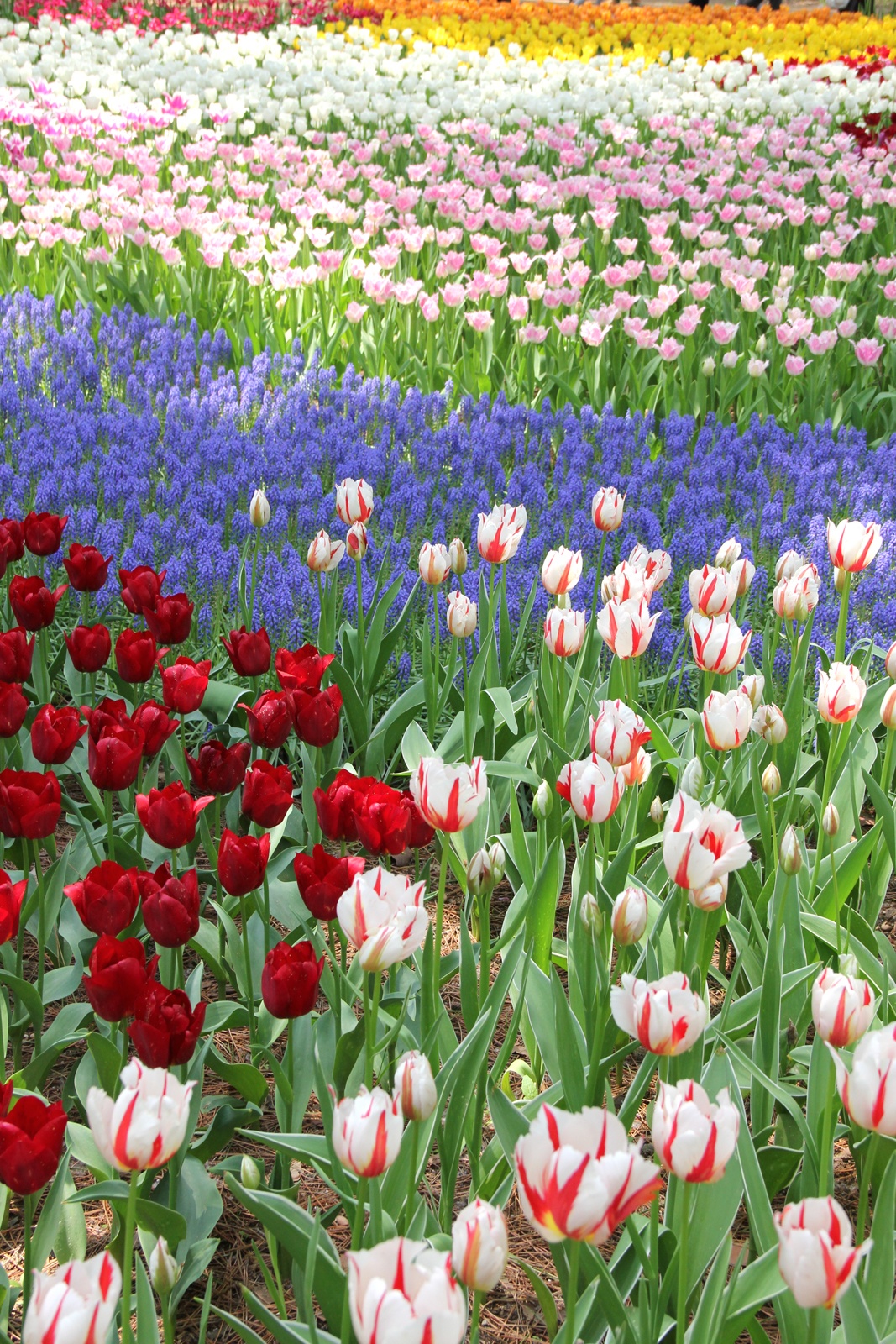
- Carpet Style
Plant tulips in tight, massed clusters. Use single colors in large groups for bold effect. This style mimics Dutch fields and looks striking in front yards. - River of Color
Arrange tulips in sweeping curves that flow like water. Blend blues and purples with pinks for a calming effect. Add grape hyacinths to enhance the stream-like feel. - Checkerboard Blocks
Alternate squares of different tulip colors. Red next to white. Yellow beside purple. This works well in large rectangular beds. - Naturalized Planting
Scatter bulbs across grassy areas. When they bloom, the effect is informal, like a meadow. Combine with crocuses or daffodils for layers of spring color. - Layered Borders
Use tall Darwin hybrids at the back, Triumph tulips in the middle, and low early tulips at the front. Add edging plants like pansies or creeping phlox for softness.
A tulips garden aesthetic can shift depending on arrangement. Straight lines give order. Sweeping curves feel relaxed. Large beds can be planted in drifts that mimic waves, much like tulips fields aesthetic seen in Europe.
Pairing with Other Plants
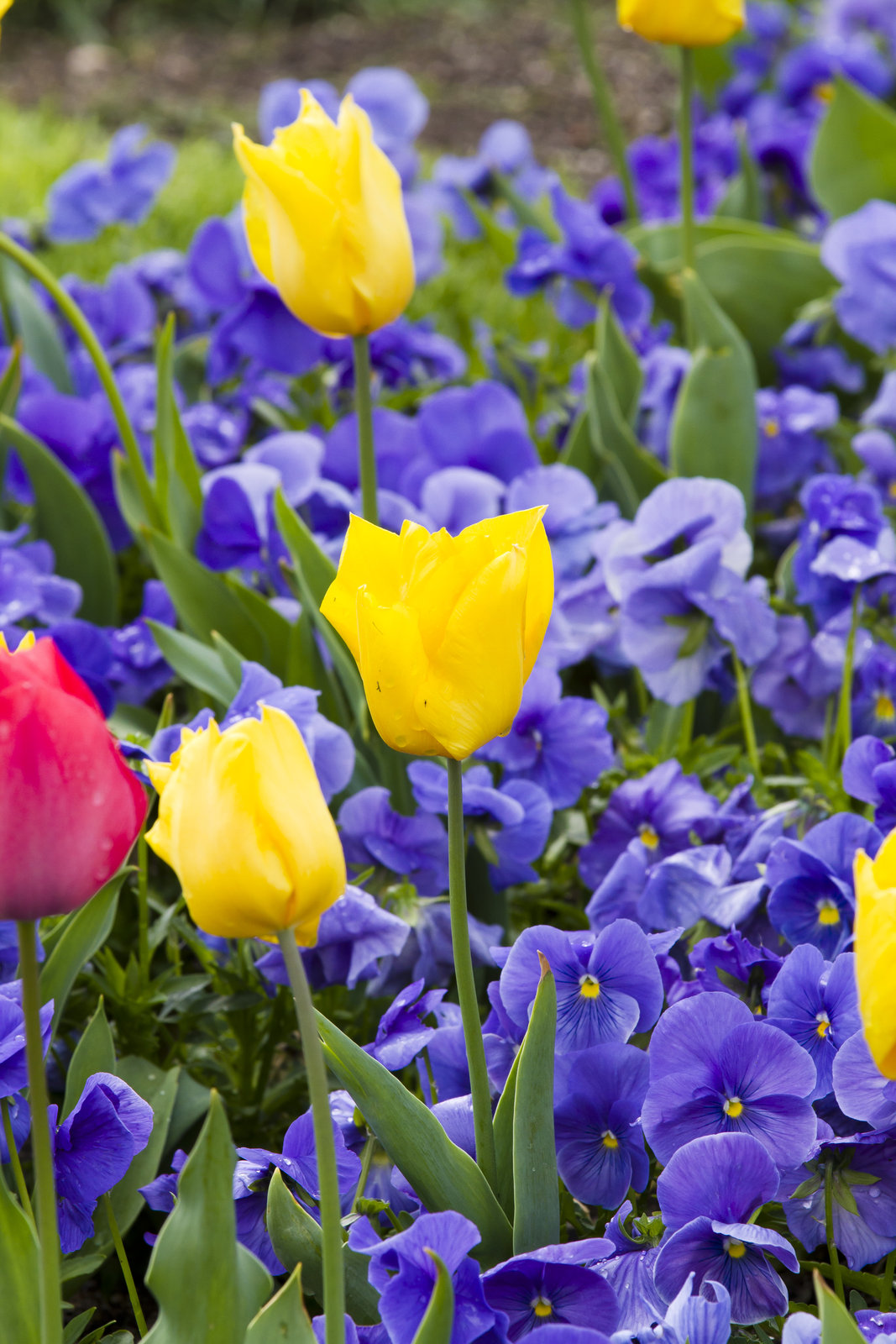
Pair tulips with other plants for lasting impact. Early-flowering bulbs such as crocuses and snowdrops can provide color before tulips bloom. Muscari (grape hyacinths) add a deep blue carpet beneath bright tulips. Pansies and violas at the base provide continuous color.
For height, mix tulips with alliums, which bloom just as tulips fade. Hostas and daylilies can take over the bed in summer once tulip foliage dies back. Shrubs like boxwood offer evergreen structure behind tulips, keeping the design attractive even when bulbs are dormant.
Combinations with Other Plants
- Muscari (Grape Hyacinths): Their deep blue complements almost any tulip shade. Plant them in front of tulip rows for contrast.
- Daffodils: Bloom at the same time and deter pests. Yellow daffodils with red tulips create a sunny palette.
- Forget-Me-Nots: Their airy blue flowers form a delicate carpet around tulips.
- Hostas: Their large leaves provide cover for fading tulip foliage later in spring.
- Alliums: Tall, globe-like flowers bloom slightly later, extending the display after tulips fade.
- Pansies and Violas: Perfect for pots or borders, adding color before and after tulips bloom.
Special Themes
- Romantic Bed: White and pink tulips with forget-me-nots.
- Bold Contrast: Black tulips with silver lamb’s ear and red pansies.
- Spring Cheer: Yellow tulips mixed with grape hyacinths and white daffodils.
- Minimalist Modern: Blocks of pure white tulips in gravel beds.
Growing Tulips Successfully
Choosing and Planting Bulbs
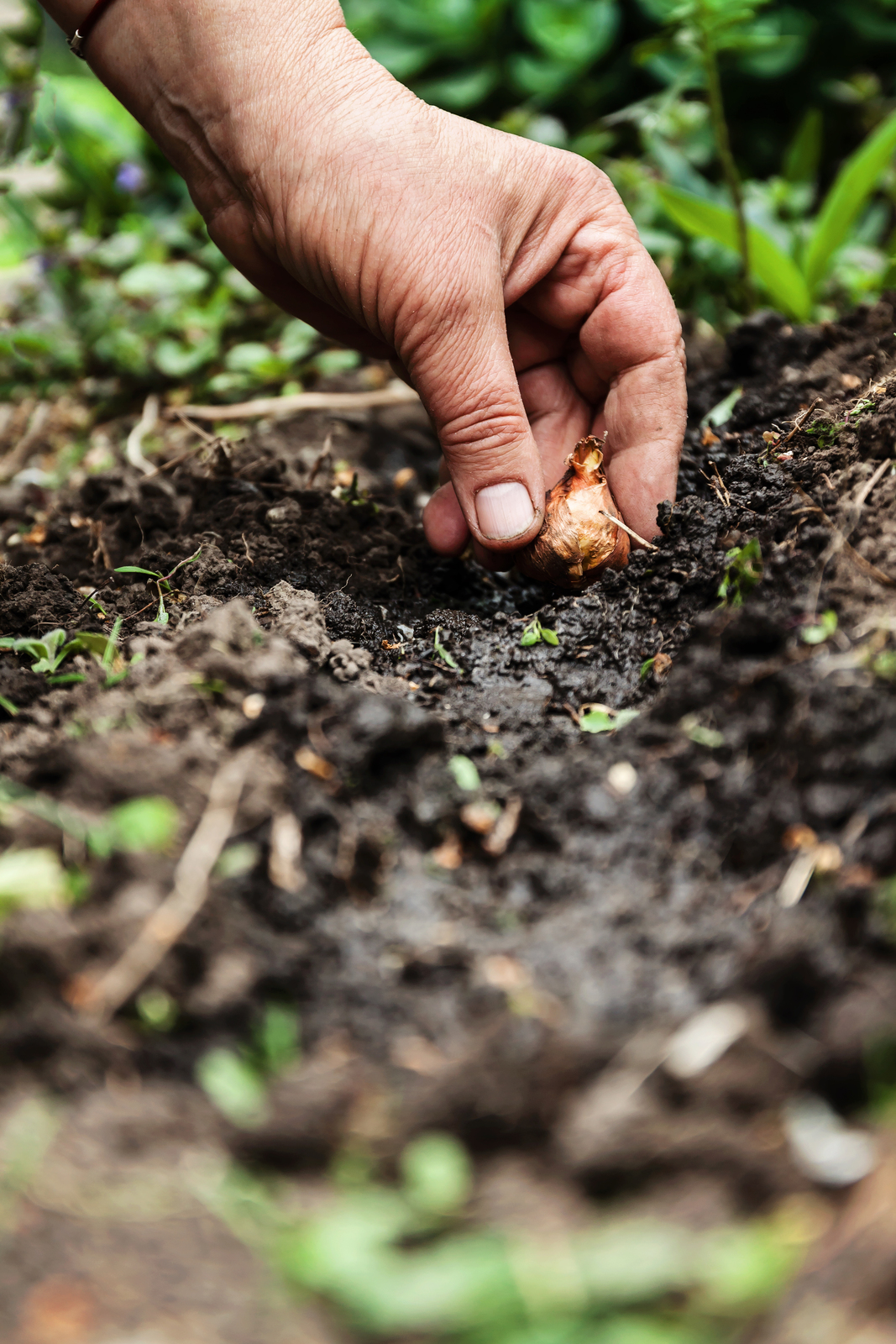
Healthy tulip bulbs are firm, heavy, and free of mold. Larger bulbs give larger flowers, so avoid small or damaged ones. Plant bulbs in fall, around 6–8 weeks before the ground freezes.
Set bulbs 6–8 inches deep, with the pointed side facing up. Space them 4–6 inches apart. Plant them closer in pots for a fuller look. Cover with soil and water lightly.
Tulip Season and Care
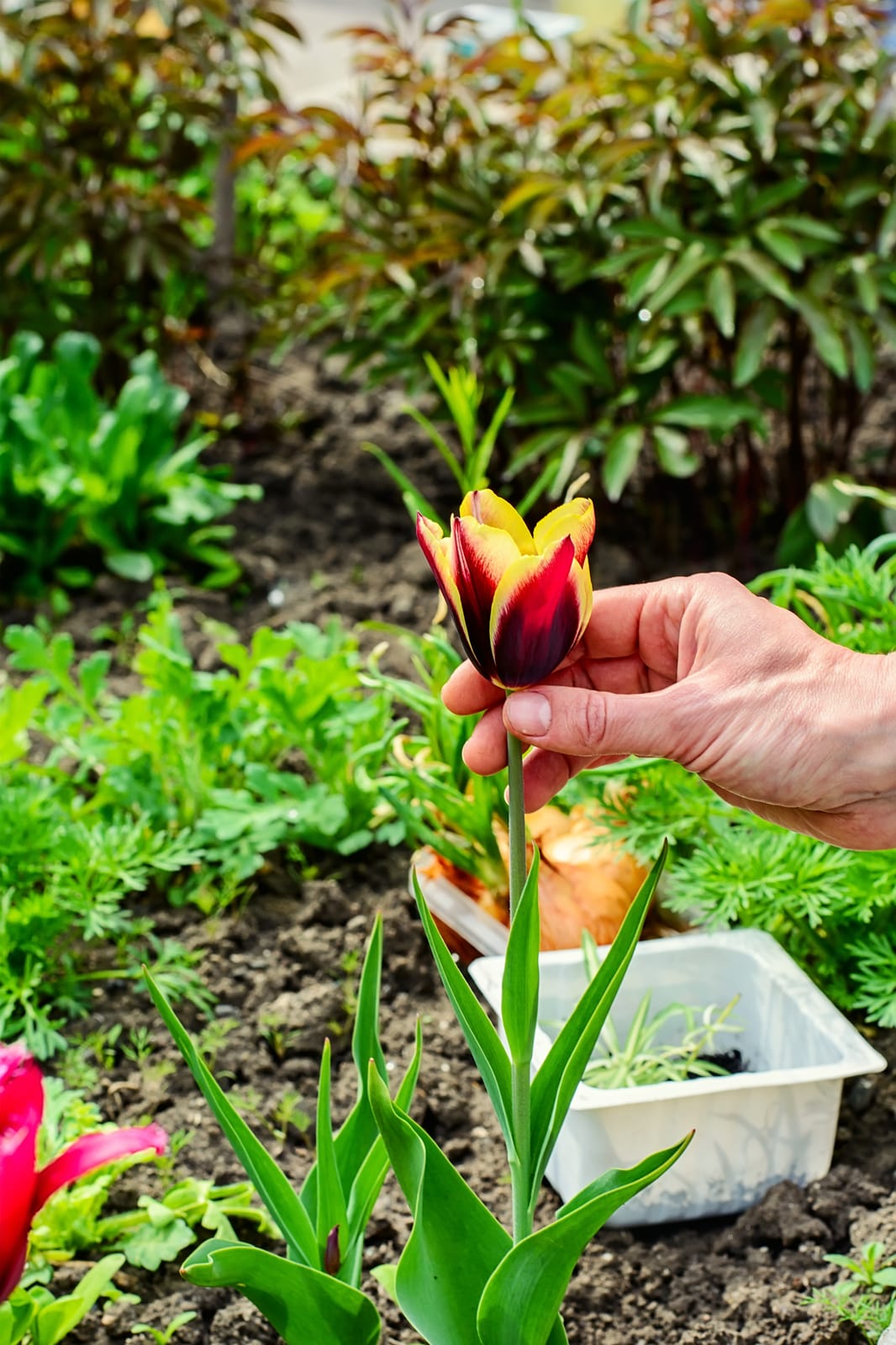
Tulip season runs from early spring through late spring, depending on type. For best results, combine early, mid, and late bloomers so that flowers appear for several weeks in succession.
During growth, tulips need little care. Water only if spring is very dry. Too much water can shorten bloom time. Fertilize lightly at planting, and again when shoots appear. Use a bulb fertilizer or balanced slow-release mix.
After Blooming
When the flowers fade, cut off the spent blooms to prevent seed formation. But leave the leaves in place until they yellow. The leaves feed the bulb, preparing it for next year. Removing foliage too soon weakens future blooms.
Problems to Watch
Tulips are tasty to deer, rabbits, and rodents. If you garden in such areas, consider planting tulips inside wire cages underground, or mix them with daffodils, which animals avoid.
Wet soils can lead to fungal issues. Ensure beds have good drainage. Rotate planting spots every few years to keep soil healthy and avoid disease buildup.
Tulips Beyond the Garden
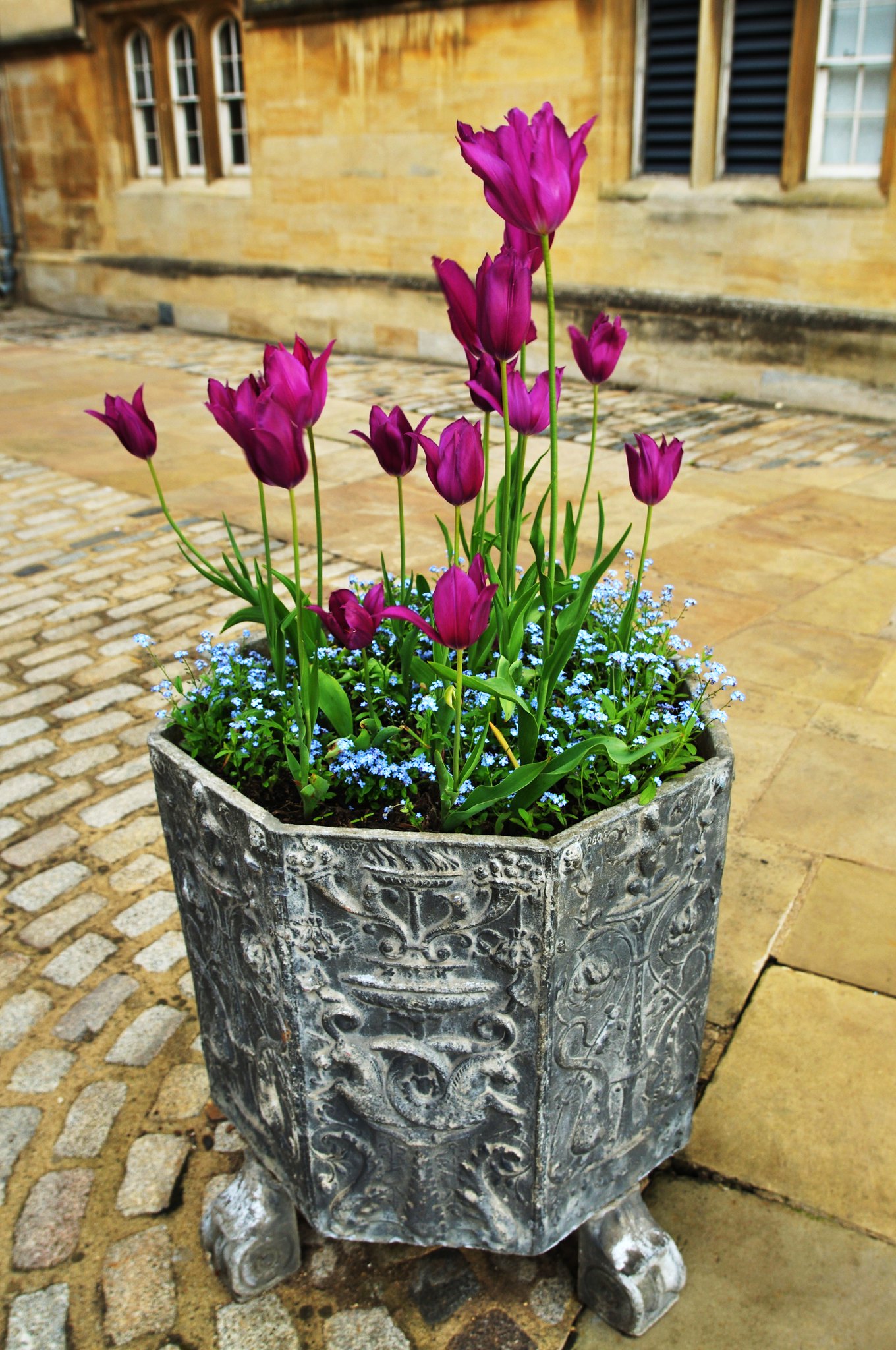
Not every gardener has wide beds. Tulips in pots are an easy solution. Deep containers give bulbs enough room. Plant them close together—almost touching—for the richest display. Place the pots outdoors in fall, then shift them to sunny spots in spring.
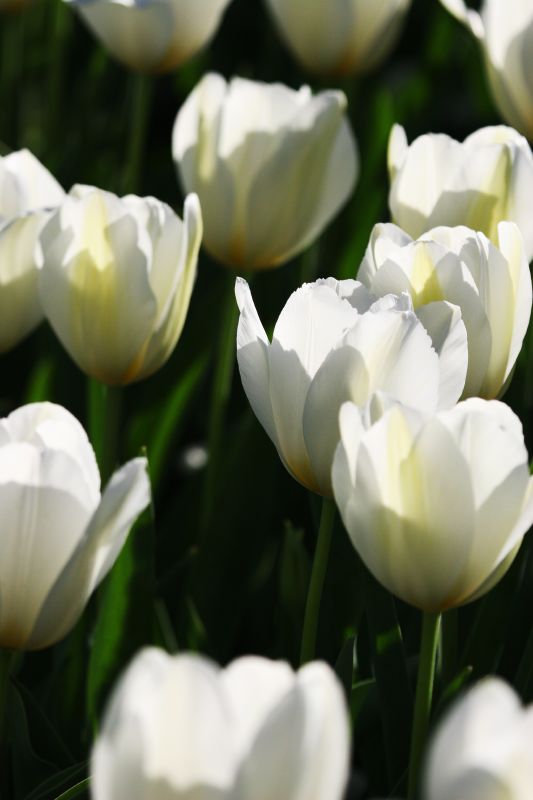
Tulips are also popular wedding flowers tulips. Brides love them for their clean lines and graceful appearance. White tulips are often chosen for purity, while pinks or soft purples bring romance. In centerpieces, tulips bend naturally, giving arrangements a graceful, living quality.
Cut flowers tulips brighten homes in spring. They keep growing even after cutting, often curving toward the light. This movement gives them charm in vases. For longer life, place them in tall containers with cool water and trim the stems every two days.
Tulips in Cultural and Seasonal Displays
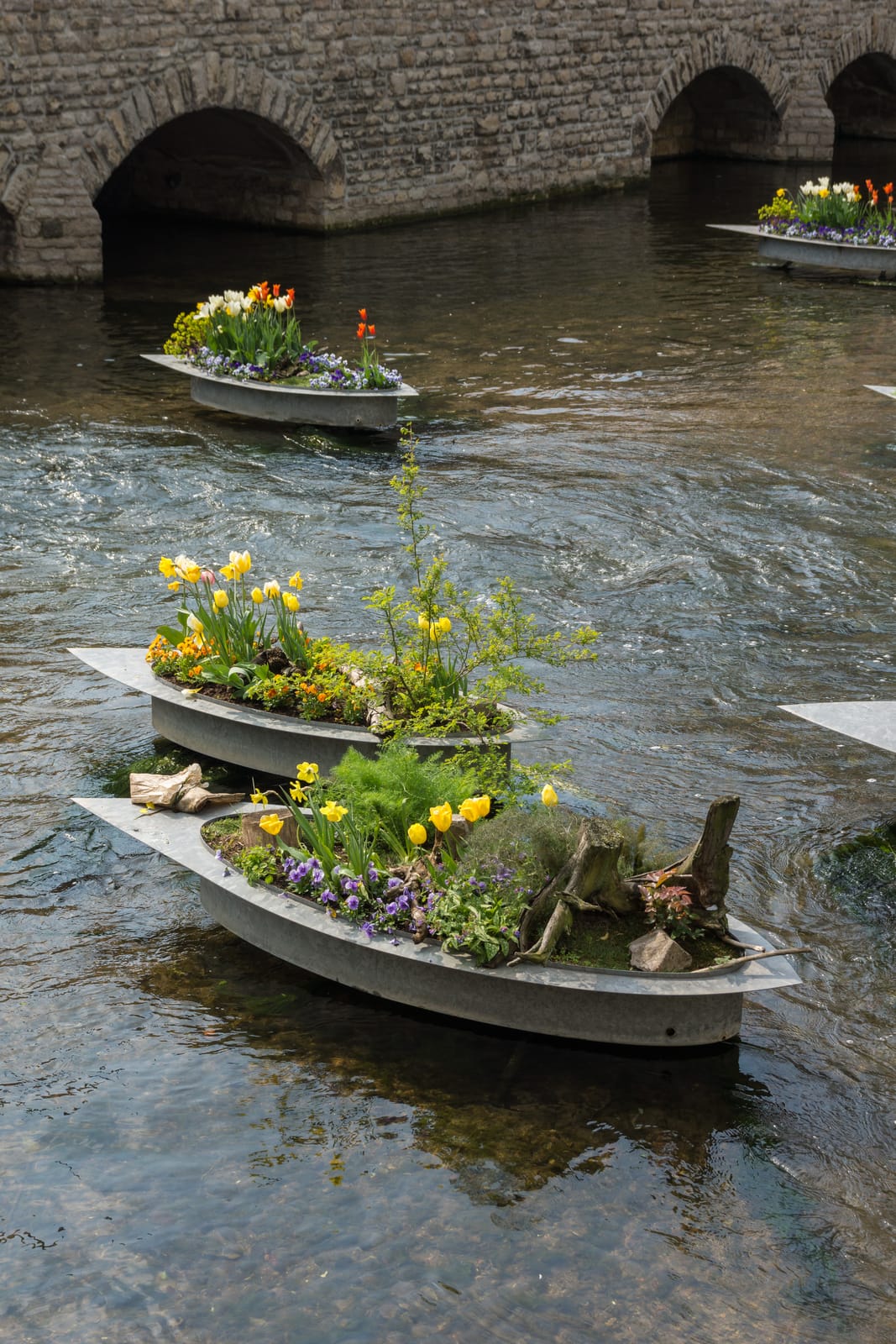
Tulips hold deep roots in history. In the 17th century, “Tulip Mania” swept through Holland. Bulbs became so valuable they were traded like currency. That craze ended, but tulips remained symbols of wealth and style.
Today, tulip fields in Holland are major attractions. Visitors travel to see the stripes of red, yellow, and purple stretching across the land. Similar displays happen in Canada, Turkey, and even parts of the United States. Festivals during tulip season bring people together to celebrate the flower’s beauty.
In Turkey, tulips were once considered symbols of paradise. In Persian poetry, they stand for love and sacrifice. And in modern times, they continue to carry meaning in weddings, gardens, and cultural events.
Inspiration and Aesthetic Combinations
Tulips don’t need to stand alone. For a polished tulips garden aesthetic, try layering them with other plants. Early perennials like creeping phlox or forget-me-nots soften the ground around tulips. Shrubs with dark leaves make bright blooms pop.
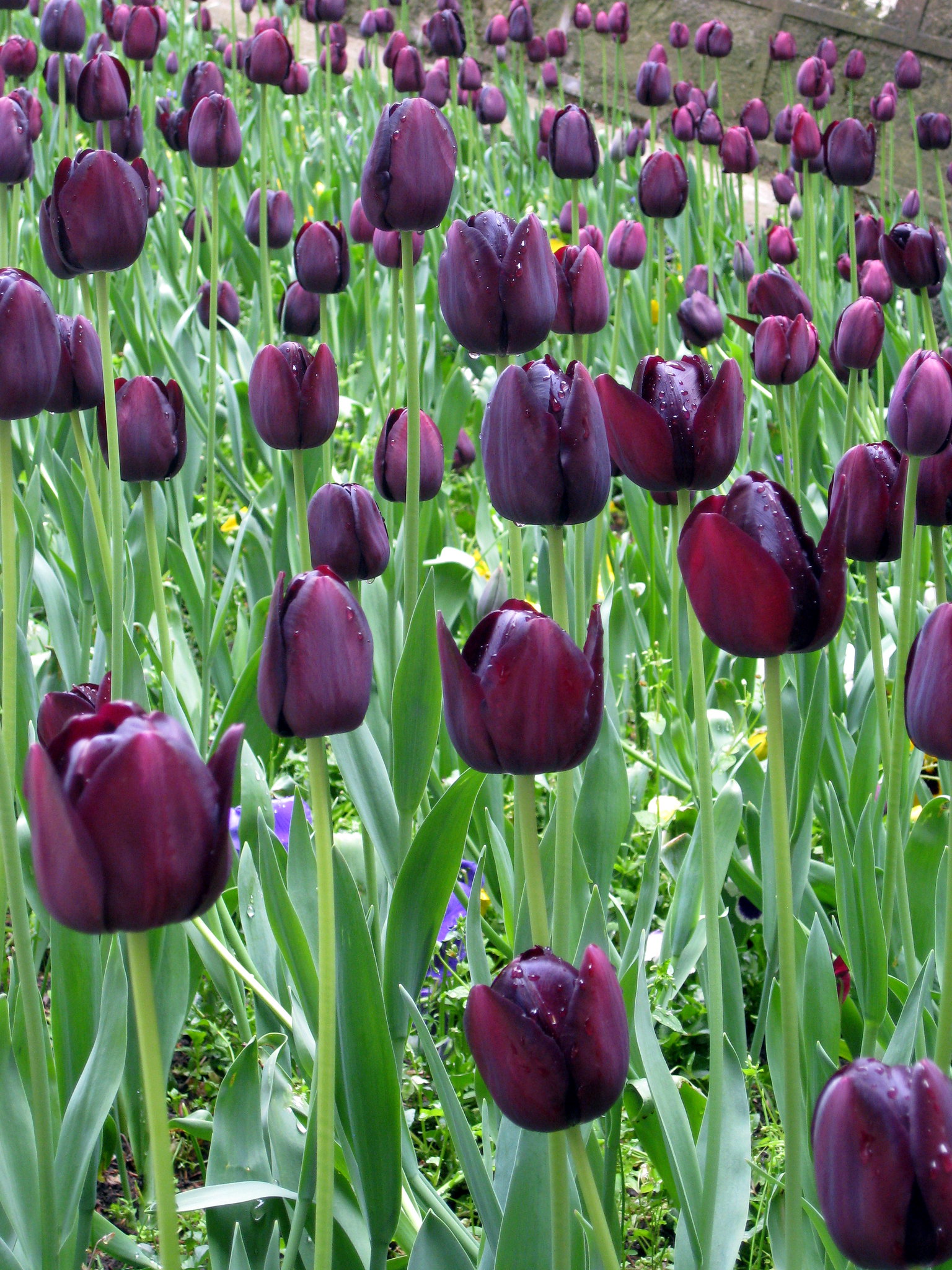
For a dramatic tulips dark aesthetic, combine black tulips with silver-leaf plants like dusty miller. Add deep purple hyacinths for texture. This style works well in modern gardens or urban patios where bold contrasts shine.
Want something lighter? White tulips paired with blue grape hyacinths create a calming, cool-toned garden. Red tulips next to yellow daffodils give a cheerful, sunny effect. Orange tulips mixed with purple pansies provide exciting contrast.
A tulip garden design can also use texture. Smooth petals contrast nicely with spiky alliums or airy ornamental grasses. Double tulips add fullness, while fringed tulips bring delicacy. Inspiration often comes from tulip pictures in catalogs, but the real creativity comes when you start mixing plants in your own beds.
Practical Tips for Success
- Plant bulbs in large numbers. A dozen bulbs look nice, but fifty or more create real impact.
- Stagger bloom times by mixing early, mid, and late tulips.
- Try planting bulbs in layers. Place late-blooming bulbs deep, mid-season in the middle, and early ones near the top. The result is waves of color from one spot.
- Use tulips in unexpected places: along steps, around trees, or in large tubs by the front door.
- Rotate planting spots every few years to keep bulbs vigorous.
Final Thoughts
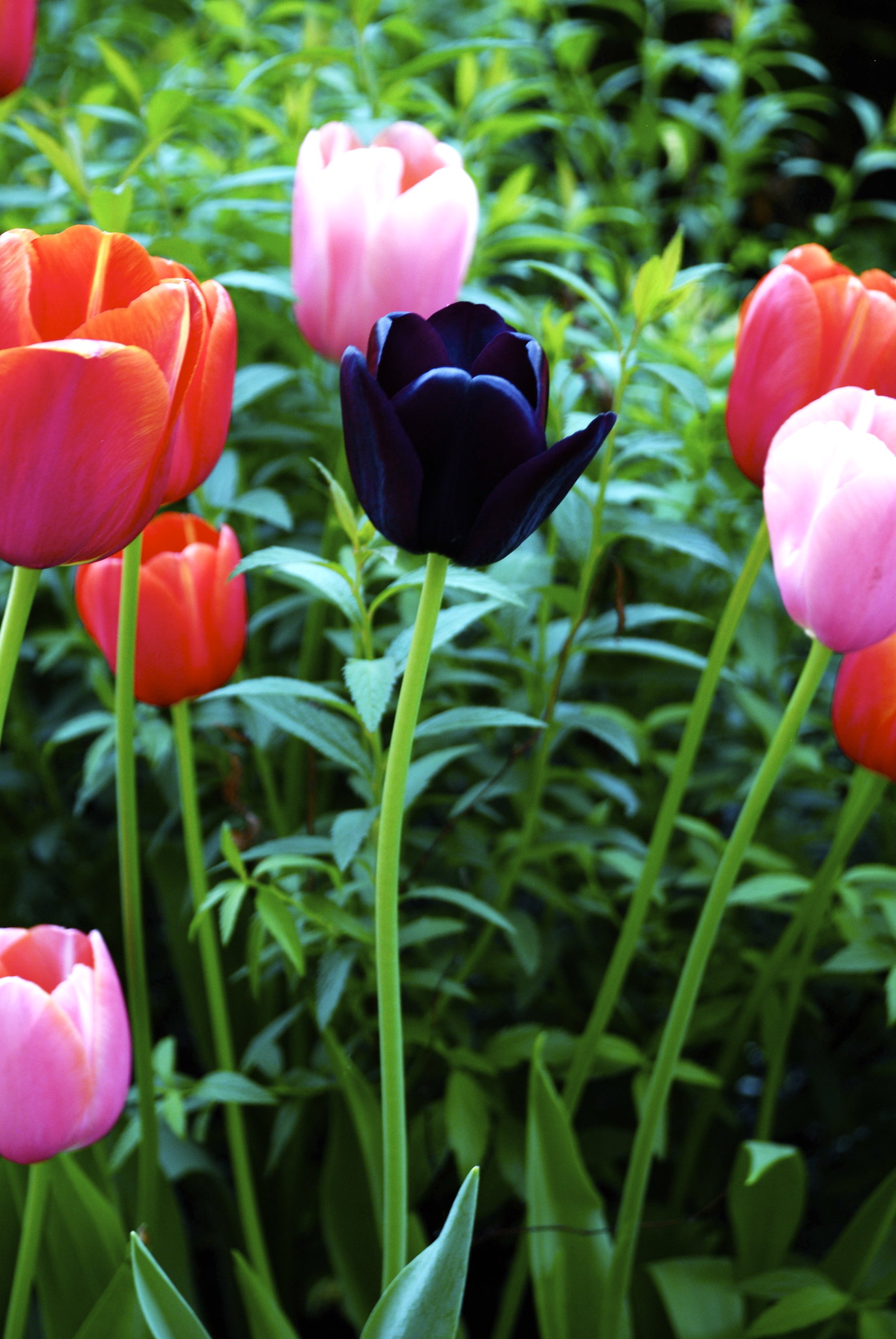
A bed of tulips never fails to impress. Their wide range of tulip colors and forms means there’s a variety for every taste. From bold, striped tulips fields to simple pots on a porch, they adapt to spaces large and small.
And the tulips aesthetic isn’t just about the blooms. It’s about the feeling they bring—the signal of spring, the joy of color, and the beauty of design. Whether you choose bright rows, dark dramatic shades, or delicate whites, tulips shape a garden’s mood.
So plant generously, care for them well, and let the season reward you with one of gardening’s most spectacular shows.
